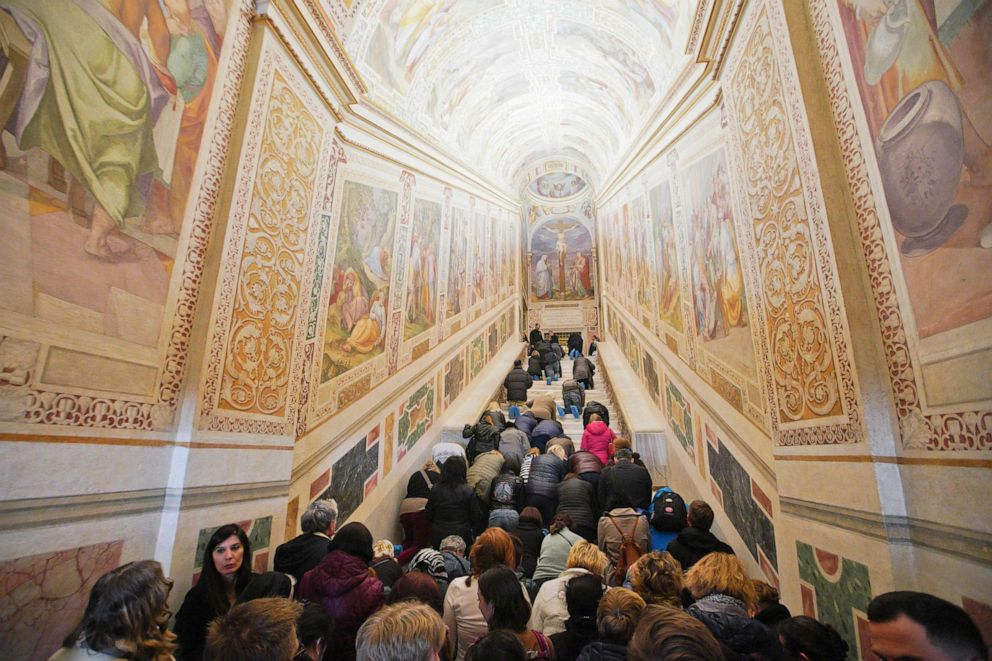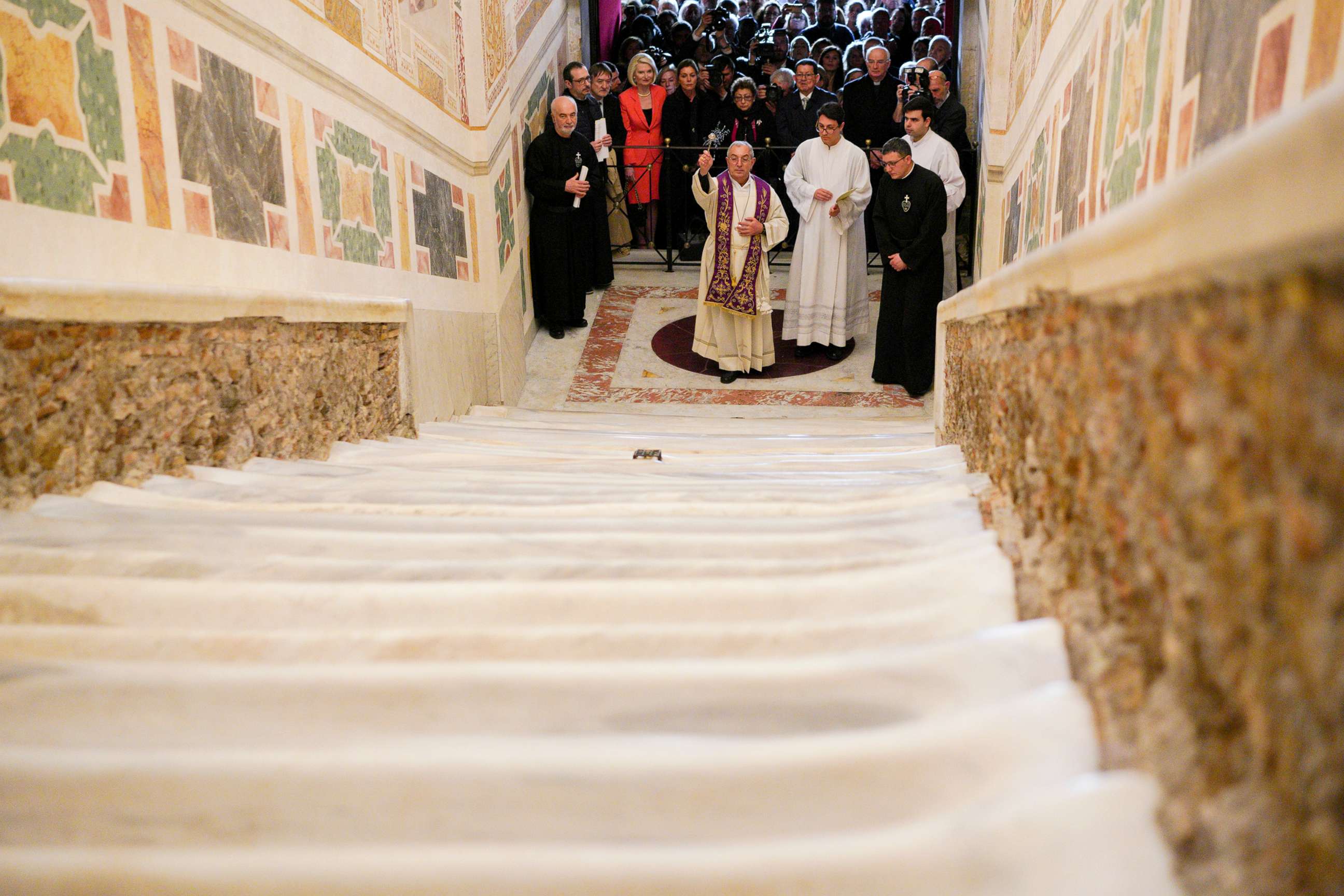Holy Stairs, believed to have been climbed by Jesus prior to crucifixion, unveiled in Rome
After over a year of restoration, the 28 marble steps were unveiled Thursday.
ROME -- After more than a year of restoration, the 28 steps that make up the "Scala Sancta," or Holy Stairs, of the Pontifical Shrine in Rome were unveiled on Thursday, just in time for the thousands of people who will flock to Rome and the Vatican for Easter.
The steps were believed to be part of Pontius Pilate’s palace in Jerusalem and are the same steps Jesus climbed before being tried by the Roman governor and sentenced to crucifixion.
It is believed that Emperor Constantine's mother, St. Helena, brought the steps from Jerusalem to Rome in the fourth century once Christianity became the Roman Empire's main religion. They are now housed in a building that contains part of the old papal Lateran Palace, across from the Basilica of St. John the Lateran in Rome.

Since the Middle Ages, when pilgrims started flocking to Rome to pray in churches and venerate relics, millions of faithful have made the traditional penitential ascent up the stairs on their knees as they pray and meditate on Christ’s passion.
The stairs had not been seen without their wooden protection in almost 300 years.
"The newly restored frescoes help the faithful connect with the Holy history," Father Francesco Guerra said.
For the next two months, until Pentecost, pilgrims will be able to ascend the bare marble Holy Stairs on their knees -- since 1723, they had been encased in walnut wood for protection.
Before Thursday's unveiling ceremony, the Vatican Museum restorers described how moving it was to uncover the original stairs, which contain three small bronze crosses embedded in the marble and spots believed to be stained by Jesus’ blood.
The restorers also found large furrows running along each step, which they deduced were caused by the toes of pilgrims’ shoes as they knelt and rose to move up to the next step over the course of centuries.

Along with the strata of dust and dirt, piles of notes, photos, coins and votive offerings were uncovered since the stairs' last cleaning in the 1950s. Pilgrims had shoved them under the wooden casing as they knelt.
The restoration of the entire sanctuary, not just the stairs, started six years ago and should be completed by summer 2020. Over 18,000 square feet of dingy-looking frescoes that decorate the stairs and the chapels in the building were carefully cleaned of grime to reveal them in their original splendor. Restorers uncovered stories of devotion in the ancient graffiti they found on the frescoes, like the slave who came to give thanks for being free of his Turkish master.
After Italian Cardinal Angelo De Donatis, vicar general of Rome, blessed the newly unveiled steps, a throng of faithful pushed forward to kneel and kiss the first step.
Others were handed plastic shoe-covers to protect the marble and be the first to start the ascent on their knees.




